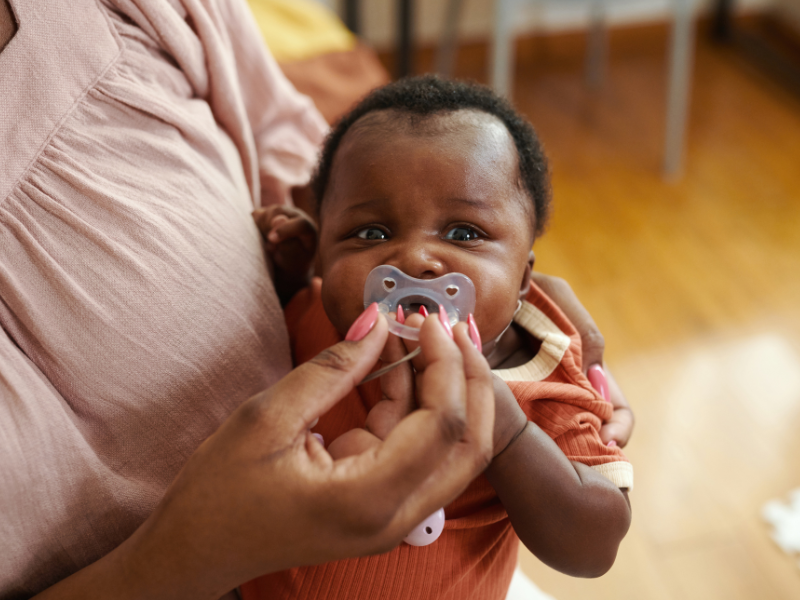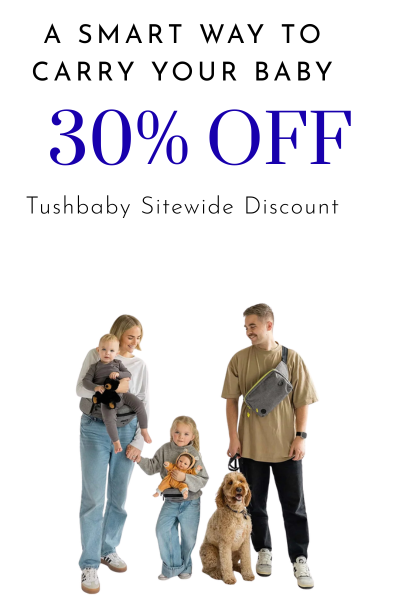You’re feeding around the clock, barely sleeping, and just when you start to find a rhythm, someone says, “Don’t give your baby a pacifier—it’ll ruin breastfeeding.”
Let’s hit pause on that.
There’s a lot of noise out there about pacifier use while breastfeeding, and it can feel like one wrong move might derail everything. But here’s the truth: it’s not about choosing one or the other. It’s about timing, awareness, and what works for you and your baby.
This guide is here to help you find that balance—no pressure, just real steps backed by expert insight and parent experience.
Why Pacifiers Exist In The First Place
Babies have a natural need to suck—even when they’re not hungry. This is called “non-nutritive sucking,” and it helps them feel calm and secure. That’s where pacifiers come in.
Pacifiers can:
- Soothe babies between feeds
- Help babies fall asleep (and stay asleep)
- Offer comfort during stressful moments (shots, car rides, new environments)
- Lower the risk of sudden infant death syndrome (SIDS) when used during sleep
That said, they can also come with some downsides if introduced too early—especially before breastfeeding is firmly established. The key is using them on your terms, not as a quick fix for every fuss.
When Is It Safe To Use A Pacifier While Breastfeeding?
Here’s the general guideline: Wait until breastfeeding is going smoothly.
That usually means:
- Your baby is latching well
- You’re nursing frequently (8–12 times in 24 hours)
- Your baby is gaining weight steadily
- Your nipples aren’t cracked or painful
For most families, this point happens around 3 to 4 weeks. Some experts recommend waiting at least six weeks, especially if you’re still building your milk supply.
Why Wait?
Early and frequent breast stimulation is what builds milk production. If a baby spends more time sucking on a pacifier than nursing, your prolactin levels can drop, which can lead to decreased milk supply. Your breasts need that consistent demand to develop a full supply of milk.
Pro tip: if you notice your baby nursing less or skipping feeds after starting the pacifier, take a break from it and refocus on breastfeeding. Feeding time should never be replaced by pacifier time.
What The Research Actually Says
Let’s clear up the biggest myth first: Using a pacifier doesn’t automatically sabotage breastfeeding.
Several studies, including reviews by the World Health Organization and JAMA Pediatrics, show that pacifier use doesn’t shorten breastfeeding duration if breastfeeding is already going well.
In fact:
- For full-term babies, pacifier use has no clear negative impact once nursing is established.
- For preemies, pacifiers may actually help by improving feeding skills and shortening hospital stays.
- Some research even shows moms who use pacifiers breastfeed just as long (or longer) than moms who don’t—likely because pacifiers help reduce overwhelm.
Bottom line? You don’t have to choose sides. You just need to know your timing.
How To Introduce A Pacifier While Breastfeeding
When you’re ready to try, here are some mom-tested tips:
- Offer it after a full feeding, not before. That way, you’re not replacing a meal with a pacifier.
- Watch your baby’s cues. If they’re rooting, sucking hands, or turning toward you, it may be hunger, not just a need for comfort.
- Stick with breastfeeding-friendly designs. Look for one-piece pacifiers made of soft silicone—avoid latex if possible.
- Keep it clean and safe. Sterilize regularly, replace monthly, and never coat it in anything sweet (this can cause tooth decay and thrush).
- Avoid strings or clips that go around the neck. These are a choking hazard.
- Use it to soothe, not substitute. A pacifier isn’t a replacement for your attention or skin-to-skin contact.
When A Pacifier Might Help More Than You Think
In the NICU, pacifiers often support preterm babies who aren’t ready to nurse yet. Sucking helps develop their coordination and gets them used to oral feeding. Research backs this up—it can reduce time to full breastfeeding.
At home, pacifiers may offer real relief for babies with reflux or high sensory needs. And for moms dealing with oversupply, using a pacifier instead of comfort-nursing constantly can give your body a chance to regulate.
Best Times For Baby Pacifier Use
Pacifiers can be helpful in certain situations once breastfeeding is established:
- When you’re away from your baby during the day
- When you’re working on night weaning
- During nap time or bedtime (remove once baby is asleep if it falls out)
- When your baby is teething and needs extra comfort
Warnings About Using Pacifiers
A few things to watch for:
- Don’t use pacifiers before breastfeeding is fully established (typically after 3–6 weeks)
- Don’t use pacifiers to delay or replace feeding
- Don’t dip pacifiers in anything sweet (breastmilk is okay, but unnecessary)
- Clean pacifiers often; replace monthly
- Avoid pacifiers with cords, clips, or strings around the neck
- Babies who use pacifiers may have slightly higher risk of oral yeast infections and ear infections
- Long-term use (beyond 1 year) can cause dental and speech issues
- Pacifier use may reduce breastfeeding sessions, which can lower prolactin levels and return fertility sooner if you’re relying on breastfeeding for birth control (lactational amenorrhea method)

Getting Rid Of The Pacifier
Eventually, you might decide it’s time to move on from pacifiers. Here are a few ways parents have done it:
- Cold turkey: Just toss it and move on. Some babies adjust surprisingly fast.
- Pick a date: Let your toddler know in advance. Mark it on a calendar and prepare for 2–3 nights of crankiness.
- Limit use gradually: Start with only naps or car rides, then phase it out altogether.
The earlier you wean off pacifiers (ideally before age 1), the easier it tends to be.
You Know Your Baby Best
There’s no perfect path here—only what works for you. Some breastfeeding moms swear by pacifiers. Others skip them completely. Most land somewhere in between.
You’re not failing if your baby needs extra soothing. You’re not giving in. You’re finding tools that work.
And if things ever feel off—painful latch, fussy feeds, dropping weight—you don’t have to guess alone. Call in help. You deserve support that sees you.
Resources
- Find a breastfeeding support group near you.
- Milkology Breastfeeding Class – Affordable, video-based online course to help you master breastfeeding at your own pace.
References
- Effect of restricted pacifier use in breastfeeding term infants for increasing duration of breastfeeding — World Health Organization (2016‑08‑30).
- Pacifiers and Breastfeeding: A Systematic Review — O’Connor N.R., Tanabe K.O., Siadaty M.S., et al; JAMA Pediatrics (2009).
- Pacifier Use and Breastfeeding in Term and Preterm Newborns — O. Tolppola, M. Renko, U. Sankilampi, et al.; European Journal of Pediatrics (2022).


